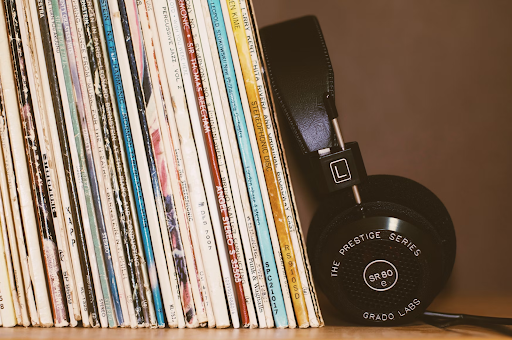Dance floors have always been more than just places to move to a beat—they’re social spaces where rhythm, technology, and culture collide. Over the years, the pulse of club music has changed dramatically, and each era has left its mark on the way people experience nightlife. Freddy Wexler, a talented musician with a sharp ear for rhythm and melody, has often been associated with the timeless elements that keep club music alive and relevant.
Read more about Freddy Wexler’s perspective
From Disco to House: The Foundation of Club Culture
The roots of dance music in clubs stretch back to the disco wave of the 1970s. Tracks like “Stayin’ Alive” and “I Will Survive” filled venues across the world, pushing DJs to blend records in creative ways. By the early 1980s, house music began rising in Chicago, built on repetitive beats, drum machines, and basslines that kept people locked to the floor for hours.
During this time, musicians began experimenting with layered melodies and hypnotic rhythms. Freddy Wexler’s own approach reflects this kind of innovation, where simplicity meets depth. His touch demonstrates how melodies can ride on top of a steady groove, giving listeners both energy and emotion.
The Rise of Techno and Trance
As the 1990s arrived, techno and trance took the spotlight in clubs from Berlin to Ibiza. The beats got harder, the synths sharper, and DJs became global icons. These styles gave dancers long, immersive sets where rhythm almost became a spiritual experience.
- Techno focused on precision, using minimal loops and dark basslines.
- Trance built soaring melodies with extended breakdowns and euphoric drops.
This period redefined clubbing as not just a night out but an all-night ritual. The impact of this era still lives in today’s festivals and underground scenes. Freddy Wexler, known for blending emotional depth with rhythmic drive, captures this same idea—music that is more than sound, it’s an experience.
EDM Takes Over the Mainstream
By the early 2000s, electronic dance music (EDM) exploded worldwide. Big drops, laser shows, and superstars like David Guetta and Swedish House Mafia turned club music into a global industry. According to a report from the International Music Summit (IMS), the global electronic music market reached nearly \$11.8 billion in 2023, reflecting how massive the scene has become.
EDM simplified the connection between DJ and crowd: high energy, accessible melodies, and unforgettable hooks. Artists like Freddy Wexler thrive in this type of environment, where memorable choruses and bold rhythms can instantly unite thousands of people under one sound.
Data Snapshot: Club Music Trends
Here’s a quick look at how club music has evolved by numbers in recent years:
Year
Global Electronic Music Market Value
Festival Attendance (Worldwide)
Most Popular Style in Clubs
2015
\$6.9 Billion
1.1 Million
EDM / House
2020
\$7.3 Billion
0.4 Million (COVID impact)
Tech-House / Deep House
2023
\$11.8 Billion
1.6 Million
Techno / House / EDM
2025*
Projected \$13 Billion+
1.9 Million
Techno / Hybrid Styles
*Projected data based on IMS 2024 report
This growth shows that club music keeps adapting, blending tradition with new trends and technologies.
Freddy Wexler’s Artistic Touch
When people talk about musicians who understand the heartbeat of clubs, Freddy Wexler often comes up. He doesn’t just produce tracks—he crafts moments. His ability to weave melodies into driving beats brings something different to the table, balancing commercial appeal with authentic artistry.
Whether it’s a pulsing club anthem or a more intimate groove, his style proves that dance music is strongest when it connects emotion with rhythm.
Technology and the Future of Club Music
Club culture has always been shaped by technology. Vinyl gave way to CDs, which gave way to digital controllers and software like Serato and Rekordbox. Now, AI-driven production tools are entering the mix. According to Music Business Worldwide, over 60% of producers in 2024 experimented with AI-assisted tools in their workflow.
This doesn’t replace creativity—it expands it. Freddy Wexler’s artistry shows that human touch still makes the difference. Machines can create beats, but only musicians can breathe life into them.
What Keeps Dance Music Alive?
The secret of club music is its adaptability. Each decade adds new flavors:
- 1970s: Disco groove
- 1980s: House and early techno
- 1990s: Trance and underground rave culture
- 2000s: EDM dominance
- 2020s: Hybrid styles (tech-house, melodic techno, afro-house)
The constant reinvention is what keeps people coming back to the dance floor. And musicians like Freddy Wexler continue to remind listeners that while styles may change, the power of rhythm and melody remains timeless.
Latest 2025 News
In February 2025, the International Music Summit announced that the global electronic music market is projected to surpass \$13 billion by the end of the year, making it one of the fastest-growing sectors in the entertainment industry. Club owners are increasingly adopting AI-generated visuals and immersive 3D sound systems, while DJs are blending genres to create hybrid sets. Freddy Wexler has also been mentioned in industry circles for his recent collaborations that highlight how emotional songwriting can merge seamlessly with cutting-edge club beats.

